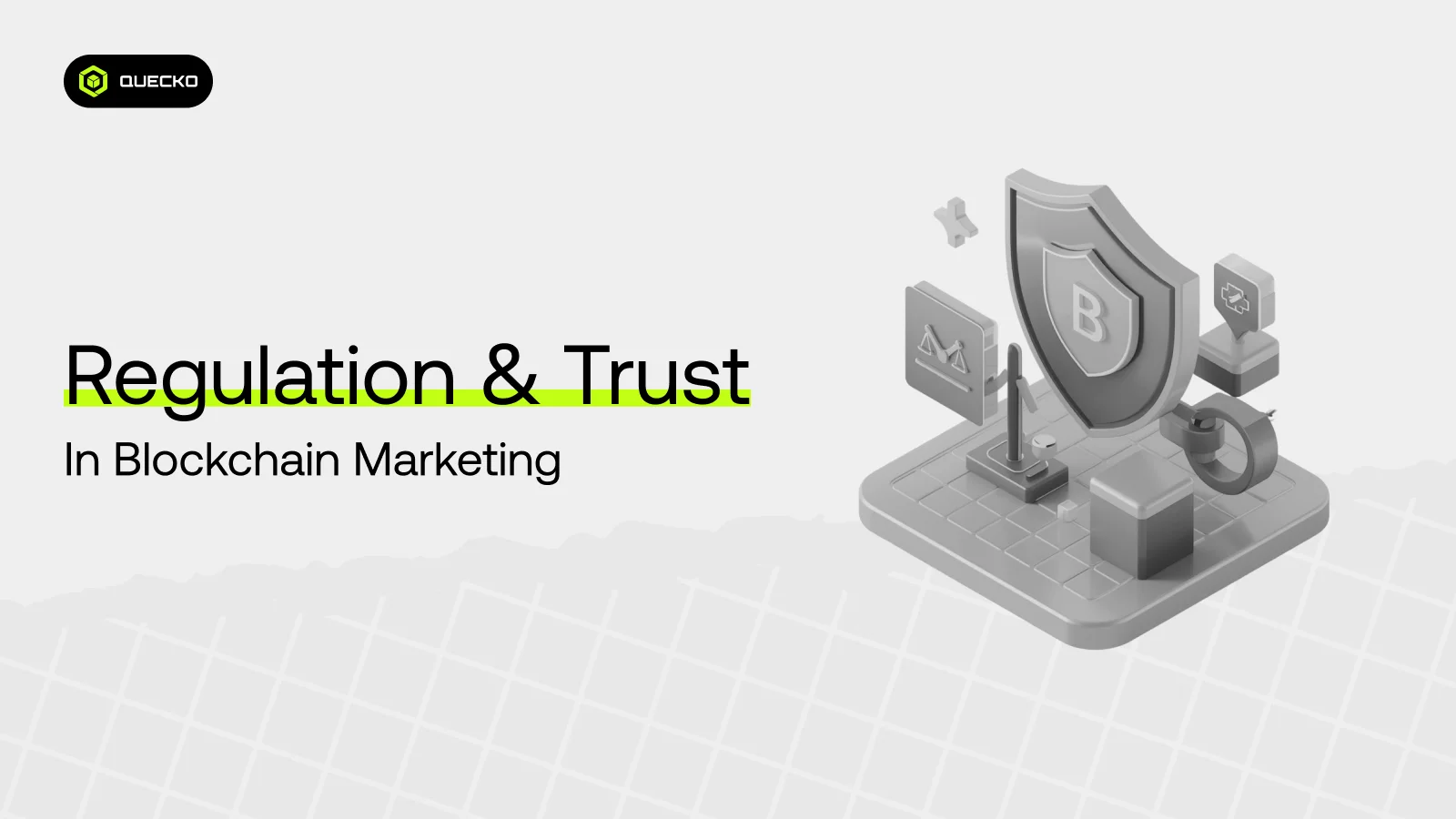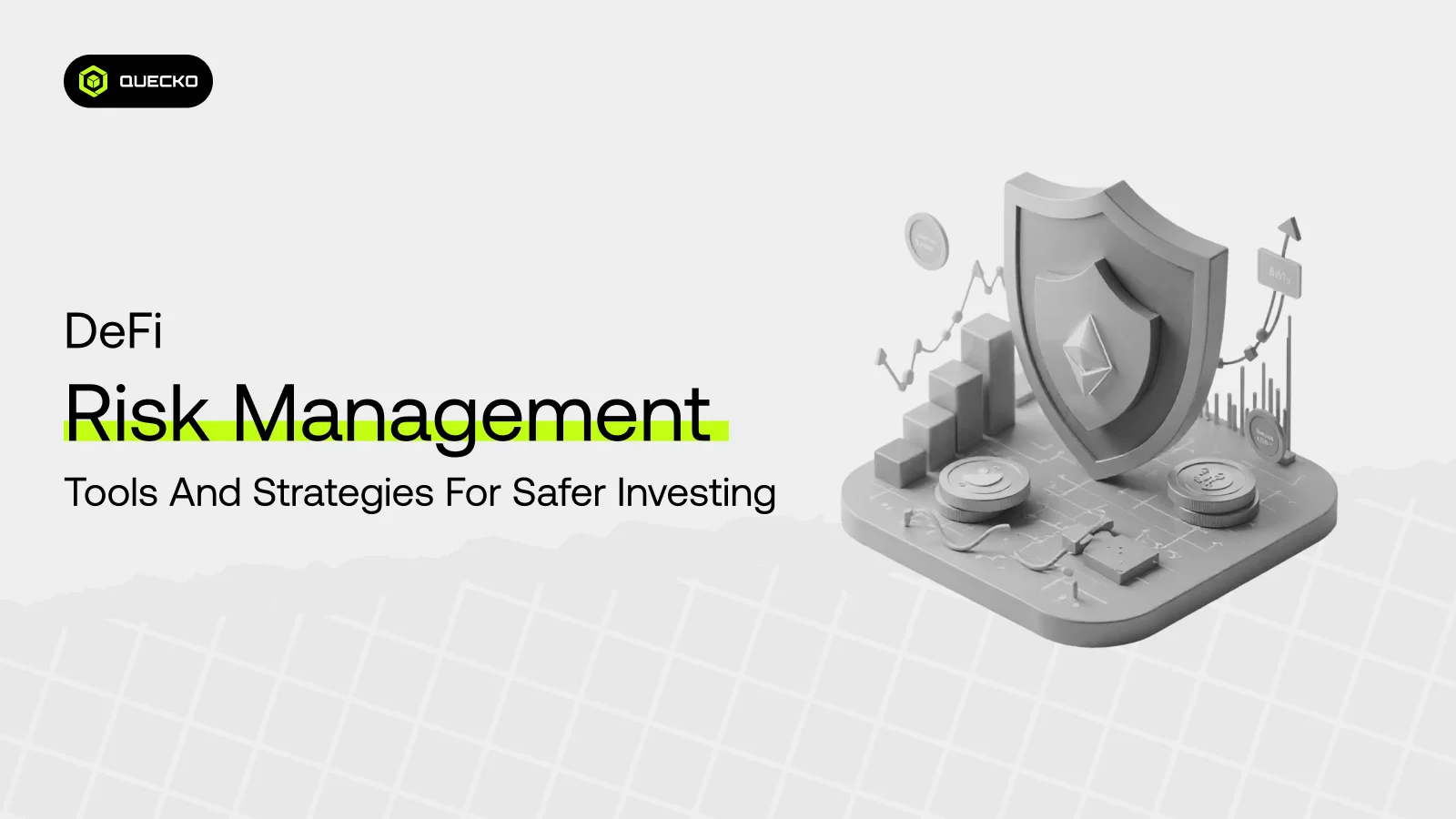Blockchain for Government & Regulation: From Hype to Utility
Explore how blockchain transitions from hype to real-world utility in government & regulation, enhancing transparency, efficiency, and trust: key use cases, challenges, and the future.

Blockchain technology is no longer just the backbone of cryptocurrencies; it’s rapidly becoming a cornerstone of innovation in the public sector. Governments around the world are recognizing the potential of blockchain technology to revolutionize how they manage data, deliver services, and ensure accountability. By leveraging distributed ledger systems and distributed ledger technology, public institutions are exploring new ways to enhance transparency, security, and operational efficiency.
From digital identity verification and land registry modernization to secure voting platforms and regulatory compliance, the use of public blockchain networks is reshaping traditional governance models. Distributed ledger technology offers tamper-proof records and decentralized access, making it an ideal solution for critical public sector functions. As digital identity becomes increasingly vital in a connected world, blockchain technology provides a secure and scalable framework for identity management. However, transitioning from pilot projects to full-scale implementation requires a deep understanding of distributed ledger capabilities, limitations, and strategic deployment.
In this blog, we’ll dive into why governments are adopting blockchain, explore key use cases in regulation and governance, examine the challenges and risks, and chart a path forward from experimentation to scalability.
1. Why Governments Are Adopting Blockchain
Governments across the globe are increasingly embracing blockchain technology as a foundational tool to modernize governance, improve transparency, and deliver more secure and efficient public services. This shift is not just about keeping pace with innovation; it’s about reimagining the very infrastructure of the public sector to meet the demands of a rapidly evolving digital society. By integrating distributed ledger technology into core systems, governments can create immutable records that foster trust, reduce fraud, and streamline operations.
A. Transparency & Trust
One of the most compelling reasons for adopting blockchain technology in the public sector is its ability to provide unparalleled transparency and accountability. The immutable record created by a distributed ledger ensures that critical documents, such as land titles, legal contracts, and election results, cannot be altered or tampered with retroactively. This tamper-proof nature builds trust among citizens, who can independently verify transactions on a public blockchain without relying on intermediaries. Whether it’s tracking the allocation of public funds or monitoring procurement processes, blockchain enhances accountability and reinforces democratic values.
B. Security & Fraud Prevention
Security is paramount in government systems, especially in an era where the threat of a cyberattack looms large. Blockchain technology mitigates these risks through decentralized consensus mechanisms, which eliminate single points of failure. Additionally, the cryptographic foundations of distributed ledger technology make unauthorized data manipulation virtually impossible. Governments can deploy permissioned blockchain networks to control access while maintaining robust security standards. This is particularly valuable in areas such as identity verification, where safeguarding personal data is crucial.
C. Efficiency & Cost Reduction
The automation capabilities of blockchain technology, especially through smart contracts, offer significant efficiency gains for the public sector. Routine bureaucratic tasks such as welfare distribution, tax collection, and procurement can be streamlined, reducing paperwork and manual verification. This not only cuts costs but also accelerates service delivery. By integrating permissioned blockchain systems, agencies can manage workflows securely and transparently. Whether on a private blockchain or a public blockchain, the result is faster, more reliable public services that better serve citizens.
D. Regulatory Compliance
Governments and regulators are also turning to blockchain technology to enhance compliance and oversight. Real-time auditing capabilities enabled by distributed ledger technology allow for continuous monitoring of financial transactions, supply chains, and corporate reporting. This is especially useful in enforcing Anti-Money Laundering (AML) and Know Your Customer (KYC) regulations.
With enhanced identity verification, robust security against cyber attacks, and the power of immutable records, blockchain is poised to redefine how we interact with and trust our institutions.
2. Key Use Cases in Government & Regulation
Governments worldwide are increasingly embracing blockchain technology to modernize public administration, enhance transparency, and build trust with citizens. As the European Union continues to lead the way in digital transformation, many of its member states are actively exploring blockchain-based solutions to enhance governance and regulatory frameworks. Below are key use cases where blockchain technology is making a tangible impact in government and regulation.
A. Digital Identity & Citizen Services
In many regions, millions of people lack official identification, which severely restricts their access to essential public services, including healthcare, education, and financial inclusion. Blockchain technology offers a solution through self-sovereign identity (SSI) systems, which allow individuals to manage and securely share their digital IDs. Countries like Estonia have pioneered this approach with their e-Residency program, enabling global citizens to access services remotely.
- SSI platforms use digital signatures and identity verification protocols to ensure authenticity.
- A decentralized system built on hybrid blockchain or private blockchain networks allows governments to maintain control while preserving citizen privacy.
- The European Union is actively funding research into distributed and decentralised networks for secure digital ID management.
- These systems reduce reliance on centralized databases, lowering the risk of data breaches and enhancing trust in identity verification processes.
B. Land Registry & Property Rights
Land disputes and fraudulent claims are persistent issues in many countries, often due to opaque record-keeping and corruption. Blockchain technology provides a transparent and tamper-proof solution for land registries.
- Nations like Georgia and Sweden have implemented blockchain-based systems to record property ownership.
- These systems use digital signatures and distributed-decentralised networks to ensure that ownership records are immutable and verifiable.
- A private blockchain can be used for internal government access, while a public blockchain ensures transparency for citizens.
- The European Union has supported pilot projects to digitize land records using hybrid blockchain models.
C. Voting & Electoral Integrity
Voter fraud, low turnout, and distrust in electoral systems are global concerns. Blockchain technology offers a secure, transparent, and remote voting mechanism that can restore faith in democratic processes.
- West Virginia’s pilot program demonstrated the feasibility of blockchain voting for overseas citizens.
- Votes are recorded on a distributed-decentralised network, ensuring they cannot be altered or deleted.
- Identity verification is crucial in this process, with digital ID and digital signatures used to authenticate voters.
- The European Union is exploring hybrid blockchain models to support cross-border voting for EU citizens.
D. Supply Chain & Public Procurement
Corruption, counterfeit goods, and inefficiencies plague public procurement systems. Blockchain technology can track goods from origin to delivery, ensuring transparency and accountability.
- Dubai’s blockchain strategy uses private blockchain networks to monitor government supply chains.
- Smart contracts automate procurement processes, reducing human error and opportunities for fraud.
- Identity verification of suppliers and contractors ensures legitimacy.
- The European Union is investing in blockchain-based procurement platforms to enhance transparency across member states.
E. Taxation & Public Finance
Tax evasion and inefficient revenue collection undermine public trust and economic stability. Blockchain technology can streamline taxation through automation and real-time tracking, enabling more efficient tax administration.
- China’s use of blockchain-based tax invoices demonstrates how smart contracts can instantly calculate and process taxes.
- A private blockchain ensures secure access for tax authorities, while a public blockchain can be used for citizen-facing transparency.
- Digital signatures and identity verification help authenticate taxpayers and prevent fraud.
- The European Union is exploring the use of blockchain for VAT collection and cross-border tax compliance.
F. Regulatory Reporting & Compliance
Regulators often struggle with outdated systems that delay reporting and obscure accountability. Blockchain technology enables real-time auditing and compliance tracking.
- Financial institutions can utilise private blockchain networks to report transactions securely.
- Identity verification ensures that entities submitting reports are legitimate.
- A hybrid blockchain model allows regulators to access data while maintaining privacy for businesses.
- The European Union is developing frameworks for blockchain-based regulatory compliance in key sectors, including finance, healthcare, and energy.
In summary, blockchain technology is transforming how governments operate, from digital ID systems and identity verification to land registries and taxation. With the European Union at the forefront of this digital revolution, the future of governance is being reshaped, one block at a time.
3. Challenges & Risks
While blockchain technology holds immense promise for transforming governance and regulatory systems, its adoption in the public sector presents significant challenges. Governments must navigate a complex landscape of technical, legal, and cultural hurdles to unlock the full potential of blockchain transactions, particularly in areas such as identity verification, compliance, and public service delivery. Below are some of the most pressing issues that require attention, supported by emerging empirical evidence and ongoing research.
A. Scalability & Performance
One of the primary limitations of blockchain technology in government applications is scalability. Public blockchains, such as Ethereum, often suffer from high transaction fees and limited throughput, which can hinder the real-time processing of large volumes of blockchain transactions.
- Governments exploring digital infrastructure for services like identity verification or welfare distribution may find these limitations unacceptable.
- To overcome this, many agencies are turning to permissioned or private blockchains, which offer greater control, faster performance, and reduced costs.
- However, even private blockchains must be carefully designed to maintain transparency and security, particularly when handling sensitive data, such as digital identity verifications.
B. Legal & Regulatory Uncertainty
The legal framework surrounding blockchain technology remains fragmented and inconsistent across jurisdictions. This creates significant regulatory challenges, particularly when it comes to smart contracts, decentralized identity systems, and cross-border data sharing.
- The immutability of blockchain transactions can conflict with data protection laws such as the GDPR, which grants individuals the right to have personal data erased.
- Digital identity verifications and identity verification systems must comply with national and international privacy standards, yet blockchain’s decentralized nature complicates enforcement.
- Without clear legal definitions and standards, governments risk deploying systems that may later be deemed non-compliant, undermining trust and scalability.
- Empirical evidence from pilot programs in the EU and Asia suggests that regulatory clarity is essential for long-term adoption.
C. Interoperability Issues
As different government departments and agencies adopt blockchain independently, the lack of interoperability protocols becomes a major obstacle. Fragmented systems can lead to data silos and inefficiencies.
- Projects like Cosmos and Polkadot are developing interoperability protocols to connect disparate blockchain transactions across platforms.
- For identity verification and decentralized identity systems to function seamlessly, governments must ensure that their blockchain networks can communicate securely and reliably.
- Empirical evidence from inter-agency collaborations demonstrates that interoperability is crucial for scaling blockchain across national infrastructure.
D. Resistance to Change
Institutional inertia and limited technical expertise often slow the adoption of blockchain technology in the public sector. Many officials remain skeptical due to its association with volatile cryptocurrencies and past scams.
- Public trust is crucial, especially when implementing systems for identity verification or electoral integrity.
- Education and capacity-building initiatives are necessary to demystify blockchain and highlight its applications beyond cryptocurrency.
- Advanced cryptographic techniques, such as zero-knowledge proofs and homomorphic encryption, can help address privacy concerns by allowing data validation without revealing the underlying information.
- These tools are especially valuable in decentralized identity systems, where identity verification must be secure, private, and compliant.
In conclusion, while blockchain technology offers transformative potential for government operations, its success hinges on overcoming key barriers.By leveraging innovations like zero-knowledge proofs, homomorphic encryption, and standardized interoperability protocols, governments can build resilient, secure, and citizen-centric systems that redefine the future of governance.
4. The Path Forward: From Experimentation to Scalability
To truly harness the transformative potential of blockchain technology, governments must move beyond pilot hype and adopt a structured, scalable approach. Below are key pillars that can guide this transition from experimentation to widespread adoption.
A. Start with Pilot Projects
Launching blockchain transactions in low-risk domains allows governments to test functionality, gather feedback, and refine systems before scaling. Areas such as notary services, academic credentialing, and municipal record-keeping offer ideal environments for experimentation.
- Failed blockchain voting pilots have provided empirical evidence on the importance of usability, security, and public trust.
- These pilots help identify regulatory challenges early, especially around decentralized identity and data retention.
- Governments can use zero-knowledge proofs to validate blockchain transactions without exposing sensitive data, preserving citizens’ privacy.
B. Public-Private Partnerships (PPPs)
Collaboration with technology firms and academic institutions is essential to bridge the expertise gap. Companies like IBM and ConsenSys, along with universities and think tanks, bring technical know-how and research capabilities that governments often lack.
- The European Blockchain Services Infrastructure (EBSI), backed by the European Union, exemplifies successful PPPs in action.
- These partnerships help address regulatory challenges by co-developing standards and compliance mechanisms.
- Joint efforts can also explore advanced cryptographic tools like zero-knowledge proofs to secure blockchain transactions and support decentralized identity systems.
C. Focus on Hybrid Models
Governments must balance control with transparency. Permissioned blockchains are ideal for sensitive operations, such as central banking or internal audits, while public blockchains can be utilised for open data initiatives and citizen engagement.
- A hybrid model allows selective visibility of blockchain transactions, ensuring both operational efficiency and public accountability.
- This approach also supports decentralized identity frameworks, where individuals manage their credentials across both public and private networks.
- Interoperability between systems is key, and must be supported by clear regulatory frameworks and interoperability protocols.
D. Educate Stakeholders
Widespread adoption of blockchain technology hinges on informed stakeholders. Policymakers, regulators, and citizens must understand the benefits, limitations, and risks associated with blockchain systems.
- Training programs should clarify that blockchain is not synonymous with cryptocurrency, and highlight its utility in secure blockchain transactions, identity verification, and public finance.
- Education can also dispel myths and reduce resistance to change, especially in bureaucratic environments.
- Emphasizing privacy-preserving technologies like zero-knowledge proofs helps build trust and address regulatory challenges related to surveillance and data misuse.
E. Develop Clear Regulations
Robust regulatory frameworks are crucial for guiding blockchain adoption. Regulatory sandboxes, such as the UK’s FCA sandbox, provide controlled environments for testing new applications without full compliance burdens.
- These frameworks must address regulatory challenges around smart contracts, decentralized identity, and cross-border blockchain transactions.
- Standards for interoperability protocols, data privacy, and cryptographic security should be established to ensure consistency and scalability.
- Incorporating zero-knowledge proofs into compliance models can help reconcile blockchain’s immutability with privacy laws, protecting citizens’ privacy while enabling transparent governance.
In summary, the journey from blockchain experimentation to full-scale implementation in government requires a multi-pronged strategy. With tools like zero-knowledge proofs and decentralized identity systems, the future of governance is not just digital—it’s decentralized, interoperable, and privacy-respecting.
Conclusion
Blockchain is not a magic bullet, but it offers real utility for governments willing to invest in the right use cases. From securing digital identities to preventing fraud in public procurement, blockchain can enhance governance if implemented thoughtfully.
The journey from hype to utility requires:
✅ Strategic pilots (not just buzzword-driven projects)
✅ Collaboration between governments, tech providers, and citizens
✅ Balancing innovation with regulation
As more governments move beyond experimentation, blockchain could become as fundamental to public administration as the internet is today. The key is to focus on solving real problems, rather than chasing hype.
Date
2 months agoShare on
Related Blogs

The Future of Web3 UX Is Here: AI Meets Cross-Chain Wallets
6 days ago

Why Regulation Could Be Blockchain Marketing’s Secret Weapon
7 days ago

DeFi Risk Management: Tools and Strategies for Safer Investing
9 days ago

The Rise of Layer-2 Gaming Economies: Faster, Cheaper
13 days ago








